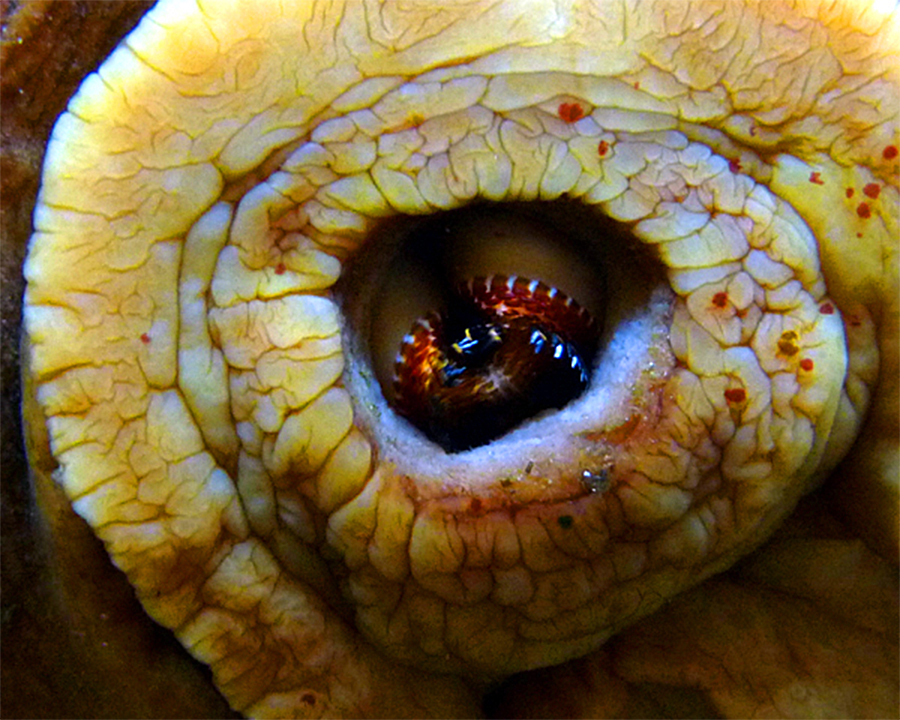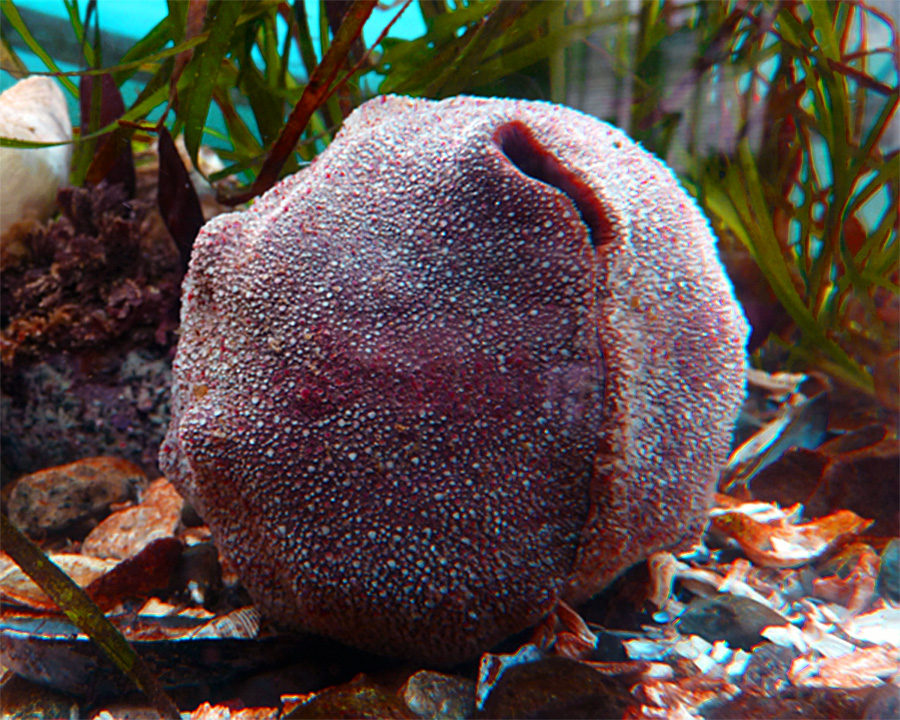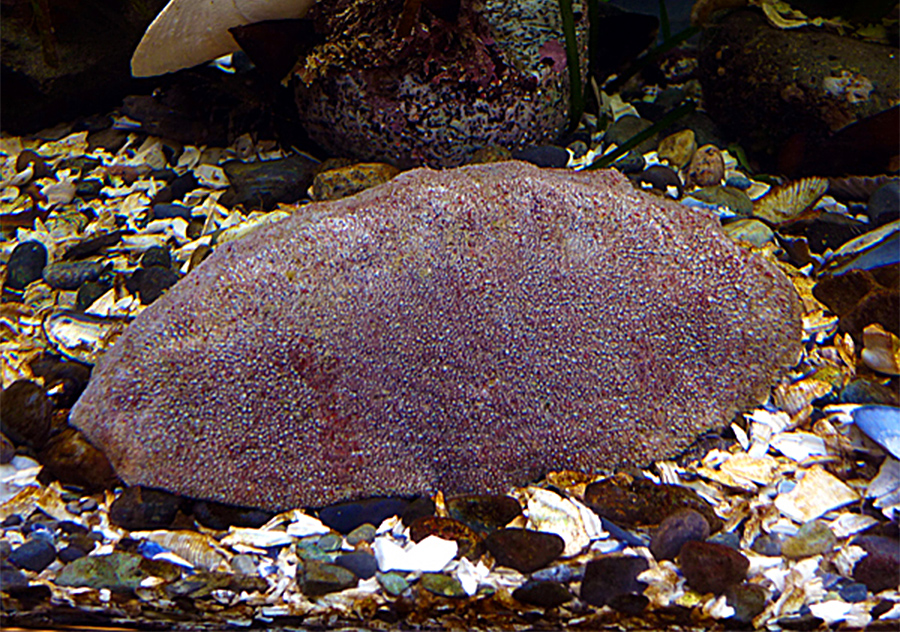Authors: Adam Kitzler and Niko Kruzel
Common Names: Gumboot chiton, giant Pacific chiton, giant red chiton, the wandering meatloaf
Scientific Name: Cryptochiton stelleri
Size Range: Up to 13 inches (33cm) in length
Identifying features: Gumboot chitons have an orange to yellow underside and their skin is normally a dark orange to reddish brown. Unlike normal chitons the eight bony plates on its back are concealed under tissue (girdle). The gumboot chiton is the largest chiton in the world and has no eyes or tentacles; but sensory cells to help it navigate. It is very slow.
Habitat: Gumboot chitons may be found up to 65ft (20m) deep but can also be found on the beach during a very low tide. They stick onto rocks using there large foot so they don’t get swept off by the tide or large waves. They exist from the central coast of California up to Alaska, across the Aleutian Islands and down to southern Japan.
Food: Gumboot chiton are herbivores and eat red algae and other seaweeds. They feed nocturnally with a radula. The radula contains two rows of magnetite-tipped teeth that scrape algae off the surface of rocks. The radula resembles a sort of zipper and the teeth of the radula are one of the hardest known materials produced by a living creature.
Predators: Various bird species such as gulls will feed on gumboot chitons and occasionally octopus, Sea Otters and sea stars. The chiton can roll up into a ball to protect itself (see the image below).
Life Cycle: Gumboot chiton can live over 40 years and are dioecious (have male and female reproductive organs in different individuals). To reproduce the male gumboot chiton releases a cloud of sperm into the water. The female releases a long strand of eggs that are then fertilized by the sperm. The fertilized egg will develop into a trochophore larva and then metamorphose into a young chiton.



The mouth of Cryptochiton stelleri showing the teeth of the radula

A gumboot chiton removed from a rock will slowly roll into a ball to protect itself.
Photos and video by D. Young
Thanks to Brent Gowan of the University of Victoria, British Columbia for permitting us to use his Scanning Electron Microscope (SEM) images of the gumboot chiton radula.
REFERENCES:
Gumboot Chiton Cryptochiton stelleri, OceanLink. Retrieved from OceanLink.com on June,5,2010
Kozloff,E(1993). Seashore life of the northern pacific coast. An illustrated guide Northern California, Oregon, Washington, and British Columbia. Seattle, Washington: University of Washington press.
Gumboot chiton, Kelp Forest, Invertebrates, Cryptochiton stelleri. Monterey Bay Aquarium, California. Retrieved June 7, 2010 from http://www.montereybayaquarium.org/animals/AnimalDetails.aspx?id=781422
Mason, S. (January 2002). Taxonomy: Gumboot Chiton. Race Rocks Ecological Reserve/ Marine Protected Area. Retrieved June 7, 2010 from http://www.racerocks.com/racerock/eco/taxalab/ensy02/sarahm.htm
Sept, J. D. (2019). The Beachcomber’s Guide to Seashore Life in the Pacific Northwest. Harbour Publishing Company Limited.


